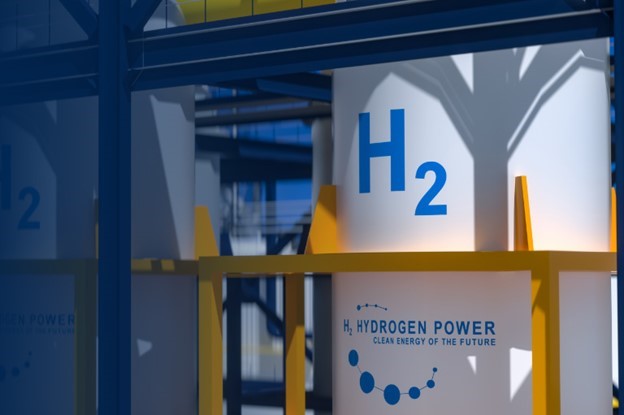The clean, renewable energy age is here to stay and hydrogen is at the forefront of this revolution. The year 2024 is shaping up to be a landmark year for clean energy such as hydrogen, with significant investments, technological developments, and strategic actions driving the sector forward.
The green hydrogen industry is poised for explosive growth. A June Deloitte Center for Sustainable Progress analysis predicts it could balloon from $642 billion by 2030 to a staggering $1.4 trillion by 2050—more than double its size in just two decades!
Let’s take a closer look at what’s driving this transformation.
A Surge in Investment is Fueling Growth

One of the most notable trends in the hydrogen industry is the increased collaboration among North American countries. The United States, Canada, and Mexico are joining forces to share knowledge, resources, and best practices, driving progress and accelerating the development of hydrogen technologies.
Direct investments in North American hydrogen projects have surged to over $46 billion, up $17 billion from 2022.
In fact, Jennifer Granholm, the United States Secretary of Energy, is confident that “Clean hydrogen is a game changer. It will help decarbonize high-polluting heavy-duty and industrial sectors while delivering good-paying clean energy jobs and realizing a net-zero economy by 2050.”
1. Policy Tailwinds
Across North America, governments are strategically implementing favorable policies to speed up the hydrogen sector’s development. These policies act as catalysts and provide a dynamic environment for investment and innovation in clean energy.
2023 witnessed a landmark shift in the U.S. clean energy landscape with the Inflation Reduction Act (IRA). This game-changer has become a global talking point, especially for its significant impact on clean hydrogen production. The IRA throws a financial lifeline to clean hydrogen projects through tax credits.
Most people consider this type of law a cash injection as companies can receive up to $3 per kilogram of clean hydrogen produced, depending on their carbon footprint. This incredible deal dramatically lowers production costs, making green hydrogen a more attractive competitor to traditional sources.
Hydrogen fuel and extracted clean energy are also gaining momentum outside of the United States. Canada has taken a leadership role with its Clean Hydrogen Production Tax Credit. This fiscal measure offers tax breaks to companies that invest in clean hydrogen projects.
Tax incentives range from 15% to 40% for eligible project expenditures. Projects that produce hydrogen with the lowest carbon intensity receive the most assistance. This makes clean hydrogen more economically attractive and underscores the government’s commitment to a sustainable energy future.
These collaborative efforts by North American governments pave the way for a robust hydrogen economy, fostering clean energy development and contributing to a more sustainable future.
2. The Rise of Hydrogen Hubs

A new concept, hydrogen hubs, is also gaining traction. Think of them as a one-stop shop for all your clean hydrogen needs.
These strategically located hubs consolidate critical infrastructure elements under one roof. Production facilities using renewable energy like solar or wind power generate clean hydrogen. High-pressure tanks or cryogenic storage facilities ensure safe and efficient hydrogen storage. Dedicated pipelines or innovative transportation methods like ammonia carriers facilitate long-distance transport to users.
Hydrogen hubs eliminate the need for complex, point-to-point logistics by integrating all the essential elements in one location. This reduces transportation costs, minimizes energy losses, and creates a more efficient hydrogen ecosystem.
Where Is Hydrogen Headed in North America in 2024?
The winds of change are blowing strong in the North American energy sector, and hydrogen is at the forefront of the storm. Here’s a glimpse into what’s on the horizon for hydrogen in North America in 2024:
Net-Zero Ambitions Propel Hydrogen Forward
Businesses increasingly know the need to adapt their operations to achieve net-zero emissions. Hydrogen, a clean-burning fuel, is emerging as a frontrunner in decarbonization efforts. With robust policies like the U.S. Inflation Reduction Act and potential follow-ups, North America is well-positioned to lead the global hydrogen race.
A Booming Industry on the Horizon
The North American hydrogen market is expected to be a game-changer, reaching a projected annual value of $140 billion or more by 2030. Current capacity is around 0.53 million tons per year (mtpa), but that number is set to climb significantly, reaching an estimated 1.7 mtpa by 2030.
Blue vs. Green Hydrogen
While North America dominates blue hydrogen production (using natural gas), the focus is shifting towards green hydrogen (produced from water using renewable energy). This shift is driven by the need for truly sustainable solutions and increasing global demand for clean hydrogen.
Trends in the Hydrogen-Fueled Aviation Industry in 2024
The aviation industry is increasingly focused on reducing its carbon footprint. Sustainable Aviation Fuel (SAF), derived from renewable sources like biomass or recycled waste, are a promising solution. The year 2024 will bring greater investment in SAF production facilities and efforts to make them more cost-competitive with traditional jet fuel.
While Europe implements mandatory SAF usage in 2025, North America is also expected to see similar regulations emerge in the near future. 2024 will be a critical year for the aviation industry as it prepares for this shift towards sustainable fuel sources.
Cost Reduction and Demand Growth
Some challenges remain in the path to widespread adoption of clean hydrogen: reducing manufacturing costs and stimulating demand. Collaboration between industry, government, and academia is essential to overcome these hurdles. By working together, these groups can drive innovation in areas like hydrogen infrastructure and transportation applications, ultimately leading to a more robust market for clean hydrogen.
One of the biggest challenges facing the North American aviation industry is the need to increase production capacity to meet the rising demand for SAF. This requires partnerships and investment in new SAF production facilities.
Mexico: The Rising Star in the World of Clean Energy
While the U.S. and Canada have grabbed headlines in the North American hydrogen race, Mexico is quietly emerging as a potential game-changer. Mexico boasts some of the world’s most abundant solar and wind resources, particularly in northern states like Sonora and Tamaulipas. This natural resource provides a perfect foundation for clean hydrogen production through electrolysis powered by renewables.
Strategic locations along Mexico’s borders could become hubs for clean hydrogen production, attracting electrolysis, storage, and transportation businesses. These hubs could further strengthen North American energy security and collaboration.
Despite its promising potential, Mexico faces challenges in its quest to become a leader in clean hydrogen. For instance, building the necessary infrastructure for large-scale hydrogen production, transportation, and storage will require significant investment. Additionally, the region requires a clear and comprehensive regulatory framework for hydrogen production, transportation, and use is needed to attract investment and ensure safety and environmental responsibility.
The Road Ahead: Challenges and Opportunities
While the future looks bright for hydrogen, there are still challenges to tackle, like safety regulations and workforce development. However, initiatives like the COP28 declaration and the U.S. Department of Energy’s Hydrogen Shot program show a commitment to overcoming these hurdles.
In conclusion, the hydrogen sector in North America is undergoing a remarkable transformation in 2024. With significant investments, technological advancements, and a focus on clean energy, the region is leading towards a more sustainable future.
Looking for a partner for your hydrogen project?
Vista Projects is an integrated engineering services firm able to assist with your hydrogen project. With offices in Calgary, Alberta, Houston, Texas, and Muscat, Oman, we help clients tailor engineering phases for the unique needs of their projects. Contact us today!
Looking for your next (last?) great job at an EPC firm?
Vista Projects is hiring for multiple roles in engineering and system integration – apply today!
Share This:




